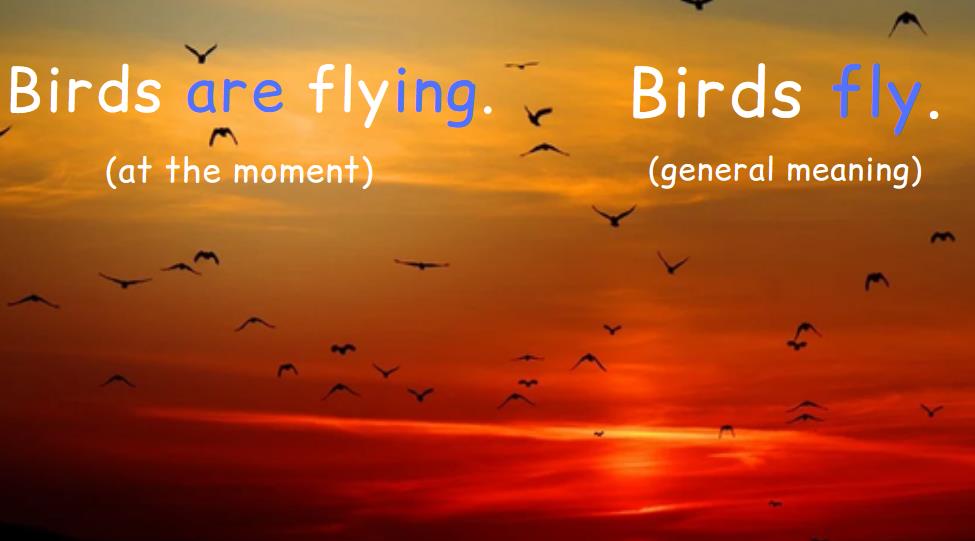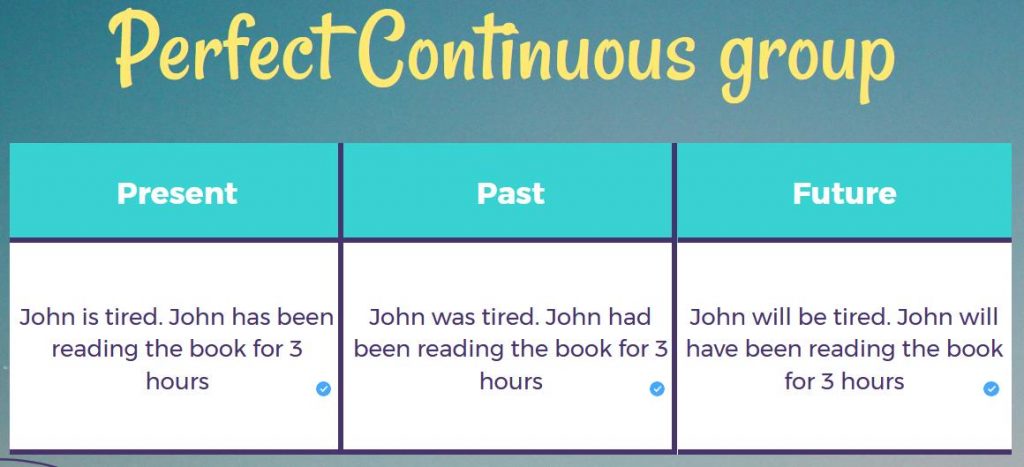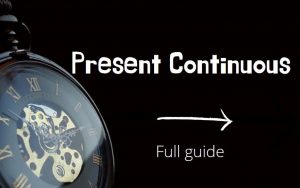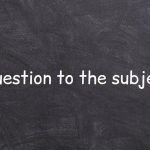English verb tenses are one of the most important topics in the English language.
English Tenses help us to understand the language. Verb tenses help us to speak about what happens in the present, what happened in the past, or what will happen in the future.
Verb tenses are a big topic of grammar because they are formed in many ways. You must know them to use them correctly.
You should not rush to study all of them at once. You should study gradually moving step by step from one group of tenses to another.

Four Groups of English Verb Tenses
We can divide all tenses into four groups. Four Aspects of Verb Tenses. These groups (aspects) are:
- Simple (Indefinite) Tense.
- Continuous Tense.
- Perfect Tense.
- Perfect Continuous Tense.

What are the three Main Verb Tenses?
The tenses can be used in the Past, Present, or Future.
The Past Tenses describe actions and events that happened in the past. It could be a minute ago, 100 years ago, or no one knows how long ago.
The Present Tenses describe facts or actions and events that are happening right in the moment of speaking or facts that are true.
The Future Tenses describe future actions and events that will happen.
12 Verb Tenses in English
4 groups + 3 tenses in each of which form 12 main verb tenses in English:
Group 1: The Simple Tenses.
Group 2: The Continuous Tenses.
Group 3: The Perfect Tenses.
Group 4: The Perfect Continuous Tenses.

Twelve! However, you should not be afraid that there are so many of these tenses! You should learn them gradually, from the easiest tenses to the harder ones and you will see the logic of how they are built.
How do we form English Verb Tenses?
We form most of the English Verb Tenses with auxiliary verbs. They are our main helpers!
Auxiliary verbs are specific words we use to form tenses. Here are examples of some auxiliary verbs:
- Will
- Do
- Did
- Are
- Were
- Etc.
I will help you soon!
Do you know me?
They are working.
Did you see him?
We need auxiliary verbs to form all tenses except two. We don’t use any auxiliary verbs to form:
- Present simple affirmative.
- Past simple affirmative.
I like you!
I liked you before!
Simple Tenses explanation
The Simple Tenses are really simple. To form them you need to learn just a few simple rules. The rules can be understood without detailed explanations. To start using them is also very simple.
We use Simple Tenses when we speak about simple regular actions, events, facts in the present, past, or future.
I love English.
I loved English in the past.
I will love English in the future.
But these tenses do not show whether the action is completed or ongoing.
Because Simple Tenses describe the fact of an action , not its duration or completeness. The Simple Tenses describe actions in a general sense.
Dogs bark.
In this example, we used the Present Simple describing the fact that dogs bark. This is one simple fact to tell. We did not tell if dogs were barking at the moment of speaking. We did not tell when dogs barked. We just described a fact in a general sense. Therefore, we used the Present Simple from the Simple Tenses group.

John works every day.
In this sentence, we described the fact that John works every day. We said this in a simple and general way. It’s just a fact. This is a usual activity that John does every day of his life. This is why we used the Present Simple from the group of Simple Tenses.
Jessica was a child 20 years ago.
In this example, we used the Past Simple. In this sentence, we described a simple fact that 20 years ago Jessica was a child.
Tom will be a writer.
In this example, we used the Future Simple (+ the verb to be) to describe a simple fact in the future. We describe who Tom will be when he grows up.
The Simple Tenses fit best in all of these examples.
Continuous Tenses Explanation
The Continuous (Progressive) Tenses differ from others because they show the process of actions.
We use Continuous Tenses to express unfinished actions or events that occur at a specific moment in the present, past, or future.
I am learning English right now.
I was learning English two days ago.
I will be learning English tomorrow.
We use the Continuous Tenses to describe the process of an action that:
- is happening at the moment of speaking.
- was happening at some moment in the past.
- will be happening at some moment in the future.
The Continuous Tenses emphasize the progress, the dynamic of actions.
John is driving home.
We are using the Present Continuous in this example to describe that John is driving home right at the moment of speaking. At the moment when we are talking about it. At that particular moment. We are using the Present Continuous because it is important to emphasize the process that is going on with John. The sentence means that John is now in his car driving on his way home.

Pay attention to the differences between the Continuous Tenses and the Simple Tenses.
If we need to describe that John drives home by car every day, in a sense that it’s a usual action he does daily, we must use the Present Simple:
Usually, John drives home by his car.
We use the Present Simple in this example. This example means only the fact that John drives home by car. It doesn’t mean that John is driving at the moment of speaking or any particular moment. It means only that John usually uses his car for driving home. It only means the fact that John prefers to drive home by his car rather than a bus.
However, if we need to describe that John is sitting in his car driving home at some particular moment at the present we must use the Present Continuous.
John is driving home.
Using the Present Continuous we emphasize the action that is happening with John at the moment.
Look at these two examples:
Birds fly.
Birds are flying.
We used the Present Simple in the first sentence. Therefore, in the first example, we described the fact that birds fly in general meaning. It is just a fact. Birds fly because birds have wings. They fly because they are birds, not fish. Birds fly, snakes crawl, fish swim.
Now, please look at the second example.
Birds are flying.
We used the Present Continuous in the second sentence. Therefore, the second sentence doesn’t sound like a fact. The second sentence indicates the process of the action. The second sentence means that the birds are flying right now (at the moment of speaking).

In the same way, we use the Past Continuous to describe actions that took place at a certain moment in the past, and the Future Continuous to describe actions that will happen at a certain moment in the future.
John was driving home at five o’clock yesterday.
Tomorrow at five o’clock John will be driving home.
Perfect Tenses explanation
The next group of tenses in English is a little more difficult to understand than the previous ones. This group is called the Perfect Tenses:
- Present Perfect
- Past Perfect
- Future Perfect
We use the Perfect Tenses to describe the result of an action in the past, present, or future.
I have learned English already.
I had learned English before I moved to London.
I will have learned English before I am 35.
We often use the Perfect tenses to emphasize that one action happened (or will happen) before another action.
Mostly we use the Perfect Tenses to describe the result of an action that ended before some moment in time.
At the same time, the Perfect Tenses do not describe the duration of this action or exactly when it takes place.
The Perfect Tenses show the fact that the action has already finished. We can see or have the result of this action.
Take a look at this example:
John has seen this movie before.
In this sentence, we used the Present Perfect, because it was important to describe the fact that John saw the movie. We do not care when he watched it, how long he has been watching it. We need to describe only one fact. John has already seen this movie. Therefore, we used the Present Perfect.
One more example:
Michael has done his homework.
In this sentence, we used the Present Perfect because the very fact that the action is finished is more important than when it happened or how it happened.
Perfect continuous tenses explanation
The last group of verb tenses in English is the Perfect Continuous Tenses. The Perfect Continuous Tenses probably are the most difficult to understand. But if you are learning this group after the previous groups, you will not have any difficulty understanding the topic.
We use The Perfect Continuous Tenses to express the duration of an action that has been completed or not completed at a specific point in time. The action can be recently finished or continuing. It can be in the present, past, or future.
We often use the Present Perfect Continuous to answer the question “How long?“
Question: How long have you been learning English?
Answer: I have been learning English for five years already.
Answer: I had been learning English for five years before I moved to London.
Answer: I will have been learning English for five years before I move to London.
We use the tenses from the Perfect Continuous group to emphasize the process of an action that lasted for a certain amount of time until a certain moment.
We use the Perfect Continuous to describe such a process in the present, past, or future.
John has been reading this book for 3 hours.
In this example, we used the Present Perfect Continuous to emphasize that John spent three hours reading the book. In this sentence, it doesn’t matter whether John finished the reading or not. What is important about this sentence is that the process of the reading took 3 hours.

Let’s compare the Present Perfect Continuous with the Present Perfect.
John has read this book.
John has been reading this book for 3 hours.
In the first sentence, we used the Present Perfect, because the result of the action is more important. In order to show the result of an action, we use the tenses of the Perfect group.
In the second sentence, it was not the result but the process that was important to emphasize. It was important to show that John spent 3 hours of his time reading the book. We don’t even care if John finished this book or not.
We use the tenses from the Perfect Continuous group to show the process of an action in the present, future, and past.

Present:
John is tired. John has been reading the book for 3 hours.
Past:
John was tired. John had been reading the book for 3 hours.
Future:
John will be tired. John will have been reading the book for 3 hours.
Conclusion
You can be confused by those explanations of the verb tenses if you are not familiar with them yet. Do not be discouraged by that. Remember, you should start to learn them step by step from the easiest Simple Tenses to more complicated Perfect Tenses.
Hello! If you would like to thank me for the articles I wrote, you can click Buy me a coffee. Thank you! ❤❤❤










